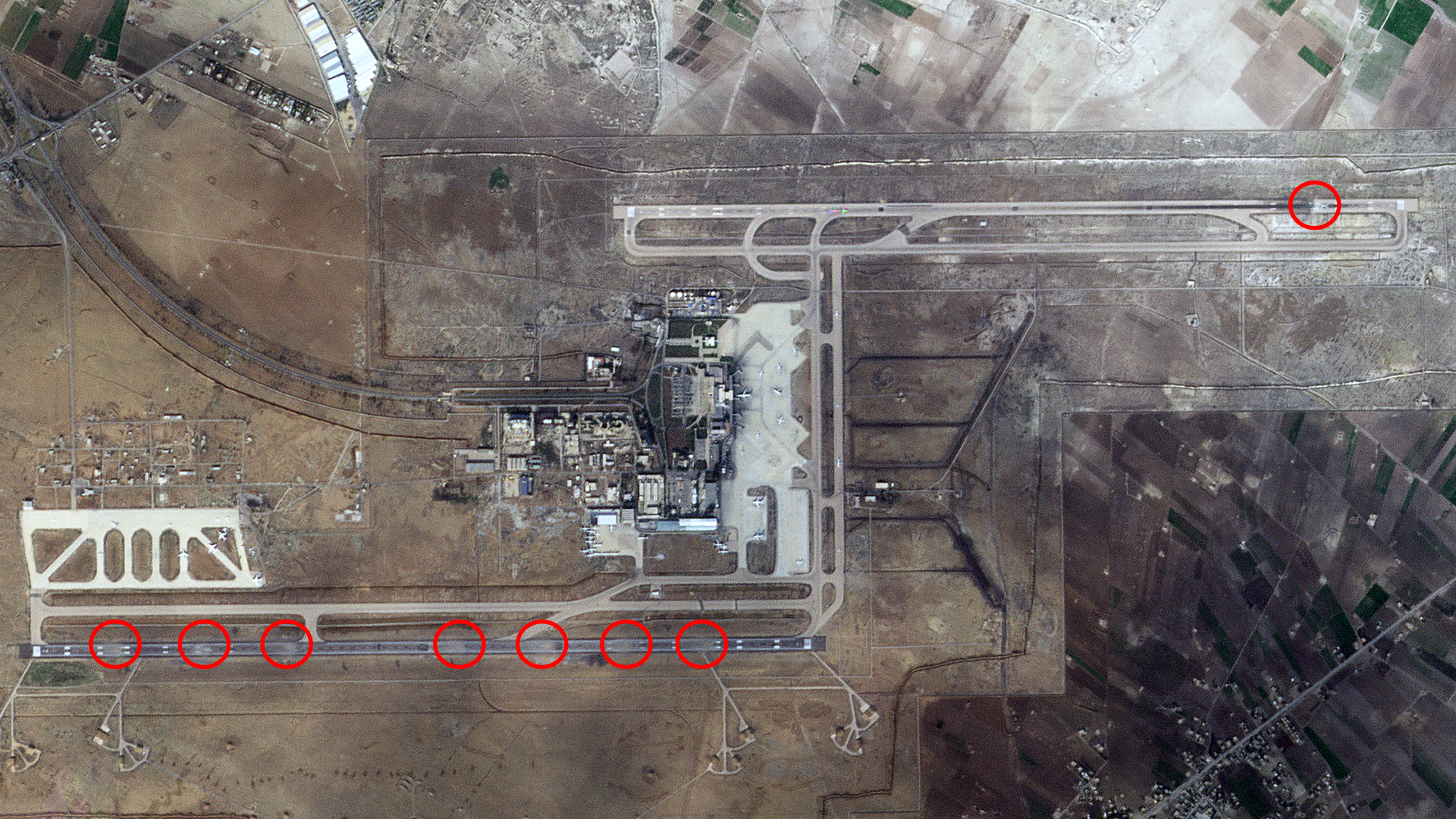Publicly available warning notices indicate that one of the two runways at Damascus International Airport in Syria’s capital remains closed after alleged Israeli strikes earlier today that look to have caused significant cratering damage. The other runway was also damaged, but now appears to be open for use with restrictions. The airport was shut down entirely for around two weeks after similar strikes last year.
A Notice to Airmen (NOTAM) issued today says that Damascus International Airport’s Runway 23L is closed and is expected to remain that way until at least January 17. Another says that Runway 23R is now open, but that its threshold has been displaced 1,640.4 feet (500 meters), reducing its overall usable length to around 10,170.6 feet (3,100 meters). It is also cleared for visual landing approaches only. An earlier NOTAM had said Runway 23R was completely closed down, but was expected to reopen today.
The apparent strikes occurred at around 2:00 A.M. local time, with an unknown number of munitions hitting the airport after approaching from the direction of Lake Tiberias in northeastern Israel, according to the Syrian military. Satellite imagery shows what may be at least seven separate impacts along Runway 23L and another one at the end of Runway 23R. The single hit on the latter runway could explain how it was possible to get it back into service so quickly, albeit with the displaced threshold. Syria claims two soldiers died in the missile attack and that several more were wounded. An arms depot nearby was also supposedly struck.
As is typically the case, Israeli authorities have not commented at all on the incident.

Strikes on and around Damascus International Airport have occurred sporadically for many years now. Oftentimes, they target specific shipments and stockpiles of Iranian weapons being transferred to extremist proxy groups, like Hezbollah, as well as the Syrian government, but they have included larger target sets, as well. Putting Damascus International’s southern runway out of commission is an interesting move. More puzzling is why the southern runway would be struck so heavily while the northern runway received just a single hit, and one that would not preclude the runway from use. In essence, the airport is still functional, just at reduced capacity. It’s known that Iran’s shipment activity usually occurs on the southernmost area of the airport, but just targeting the southern runway would not halt those operations. This is especially true if taxiways connecting the two areas were not severed, which they do not appear to be in low-resolution imagery. Still, operations could be executed in another area of the airport even if they were.
It’s hard to imagine this was deliberate. A more plausible explanation is that the munitions targeting the northern runway in a similar way to the southern one didn’t make it to their targets. Otherwise, if intentional, it seems Israel was sending a message to the Assad regime rather than aiming to achieve a tactical outcome. We could also see follow-up strikes tonight aimed at completing the job. We just don’t know at this time.
We will continue to update this story as more information becomes available.
Contact the author: Tyler@thedrive.com and Joe@thedrive.com
